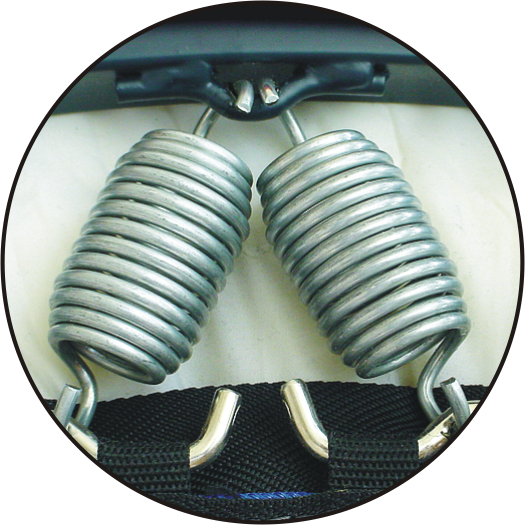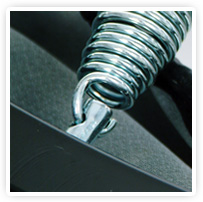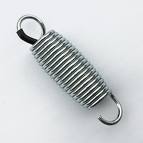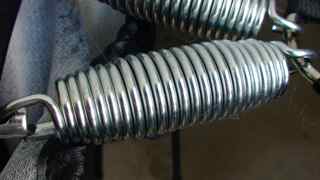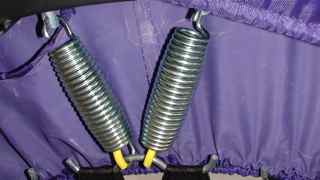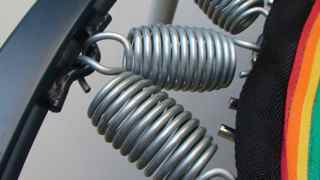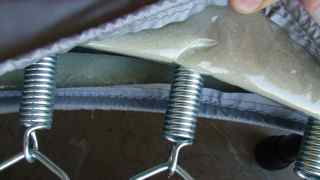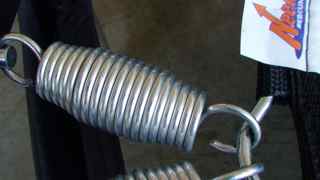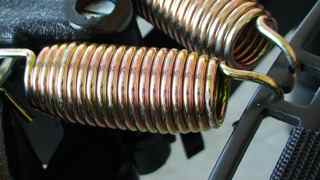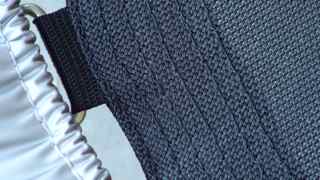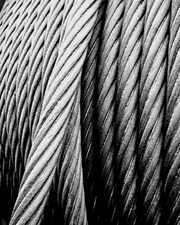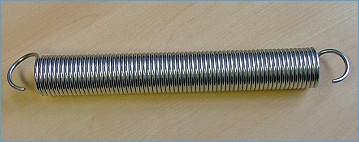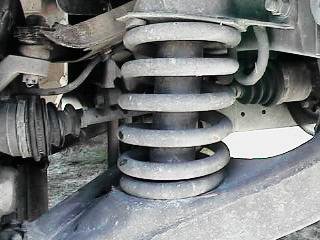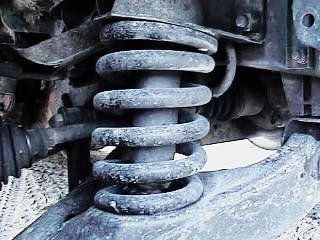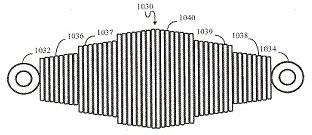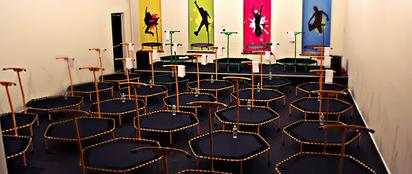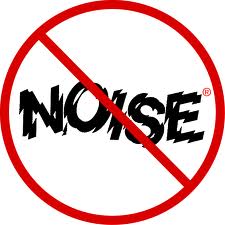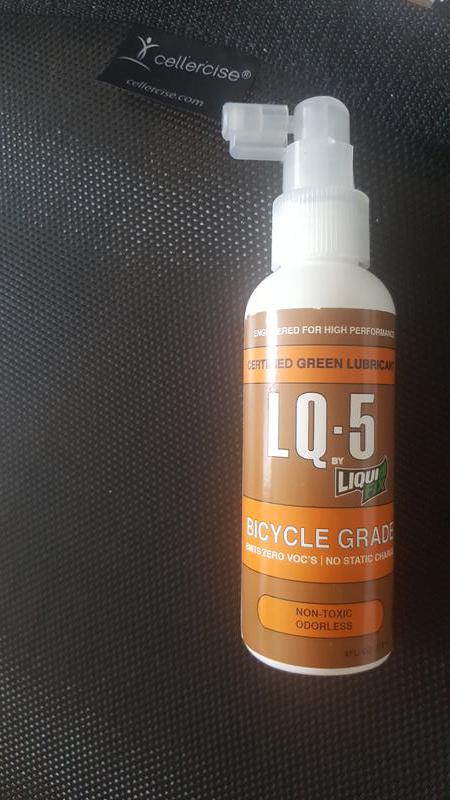It is a tough decision to make when deciding on springs that you never have to change and springs that you have to change every 2 years.
For those that want the softest bounce you can get from a spring, you WILL have to change springs every 2 years. For those that cannot afford to get springs every 2 years might want a rebounder that has springs that last a lifetime. The bounce will not be as plush but if you get springs that are triple tiered, you get 3 different tension levels which compensate for a soft bounce. The middle tier of a triple tiered spring, for example, are larger and give a soft bounce.
Each spring, weather that be a hard spring, a soft spring, or a spring that you never have to replace, each has its own pros and cons. When manufacturers design springs, they take into account the type of bounce people want (soft, medium, or hard), the stability (do the springs cause the feet to pronate or invert?), and longevity. Cheaper springs will have to be replaced sooner and you stop getting the proper G-force since the mat bottoms out when the springs need to be changed. You have to make a choice over stability percentage over softness of bounce.
Are lifetime or 2 year springs better?
Jumbo Cellerciser Pro Spring (triple tiered) Urban spring (barrel shaped)
High end (Barrel) spring Sporting good store spring (smallest single tiered springs)
Needak (Barrel shaped spring) ReboundAir spring (a different alloy, a different color)
Fabric Bungee cord (rubber and nylon)
NOTE TO NEW REBOUNDER ENTHUSIASTS:
There will be many people who have never rebounded and do not know what makes one rebounder better other than you don't have to ever change springs or one that adjusts to your weight like the triple tiered spring. Other rebounders are good but you might need to take certain precautions, such as one some you might have to stand with your feet an equal distance from the center point of the mat. Some will require you to wear pronation running shoes. The springs make the biggest difference in the quality of the bounce. If you study the springs, the concerns with larger mats that cone in and the physics of each bounce, you won't have to try all the rebounders to find one that fits your needs.
If you buy two rebounders and keep the one you like I will give a full refund on the model you return from us that you purchased with the one you are keeping and I will pay the shipping. I put them on Ebay and I sell it as a used rebounder and I never get stuck with them. So, if you buy both and want to return the other... do not feel bad or that you will be out of shipping costs. I will usually have you ship it to my next customer if someone wants it. I really don't mind returns and you never have to worry about the shipping. I urge you to buy both rebounders if you are having a hard time picking out the best one. I do not charge restocking fees.
ALLOY:
An alloy is a metal made by combining two or more metallic elements to give greater strength or resistance to stretching. Steel is made from iron containing carbon. The more carbon the steel has the more resistance to deformation, or stretching of the springs. The steel alloy springs used in rebounder springs can range from .02% to 2.14% by mass.
The ratios can be of bronze, nickel, aluminum, copper, or even gold.
The manufacturers must decide the price point of their rebounders and buy the steel that will fit their budget. A more expensive rebounder typically has springs with higher amounts of carbon.The steel is melted in the spring molds. Watch out for springs that are not perfect but not bad enough to be a reject. DO NOT ACCEPT REJECT SPRINGS. ALWAYS CHECK YOUR SPRINGS WHEN YOU GET YOUR REBOUNDER.SEE SPOON TEST. This is the test where we tap on each spring with a spoon and listen to the sound of each spring.
An example of a single tiered steel spring. In the beginning, most trampolines were just mini versions of the big outdoor trampolines with the same type of single tiered spring but just smaller. After all the problems in the beginning,
barrel and triple tiered springs were designed.
Consumer notice:
We weighed each spring to see if every spring was uniform so that each spring had the same
tension which helps to maintain even bouncing. And what did we find? We found that not all the
32 springs weighed the same. make sure that all the springs have nearly the same weight. Springs that have different weights
can be demonstrated when the mat is firmer or softer in one spot than the other symmetrical spot.
The highest grade carbon steel spring is only good if the weights don't vary from one spring to another.
There are 2 types of springs on the market.
The first is the single tiered spring. If you are going to get a single tiered spring I would highly recommend the Bellicon
rebounder. After that, I would recommend the Needak. After that, it is just a matter of personal preference.
The 2nd type of spring is the triple tiered spring. This type of spring will give even resistance across the mat.
Make sure you get a high carbon alloy spring if you are going for triple tiered. Cellerciser has set the bar when it comes to
triple tier springs.
The way to tell if a spring is a barrel spring or a triple tiered spring is to look for a ridge between each tier. The ridge is all it
takes to focus the weight into different areas of the spring.
Notice:
If you are going to get a barrel spring, just know that these are not known for adjusting to the resistance of the person's
weight when bouncing. Barrel springs can look almost like the triple tiers but if you look closely you will see a difference.
It is hard to see the difference from pictures on the net when look at the actual spring. You have to see the spring in
action to see the difference.
Barrel springs are tapered springs that accelerate and decellerate using the "entire" spring. If a person is 100 lbs they will
get a different bounce than a 200 pound person will. This is because the entire spring is being used no matter what the weight.
Triple tiered springs are the only self adjusting springs on the market. If a 100 pound person jumps on the rebounder, they will only use the portion they need given how much they weigh or how high they are jumping. And the same goes for a 300 pound person. Avoid springs that are too rigid and stretch easily. Low carbon metal alloys are always stiffer.
Springs:
SINGLE TIERED SPRINGS
These springs will not adjust to your weight and you often have to jump in the same stance since the springs nearest your feet will stretch more than the other side of the mat. These can still be high grade nickel steel but if you adapt to positional jumping you can get by with this type of spring. If a person is heavier they will get a different bounce as a person who is much lighter giving softer or harder bounces since the springs cannot adjust for the person's weight. Single tiered springs can be great for those with a weight that the rebounder was designed for but if you are 20 pounds away from the "perfect" weight the rebounder gives the most even bounce for, then you will feel a bounce that is too firm if you are lighter and too soft if you are heavier. This is the time you need to decide to get a customized rebounder with soft, medium, strong, or extra strong springs or get a triple tiered spring rebounder that has solved the issue of customizing springs to the body weight.
TRIPLE TIERED SPRINGS
These springs are usually the highest grade, which is nickel based steel. Nickel based steel will not stretch out like lower grades. Jumping near the edges of the rebounder has no stretching effect like aluminum based springs. These are the only type of springs that I have found that give even bouncing that doesn't sink in the middle and feel stiff on the edges of the mat.
LOW CARBON ALLOY STEEL SPRINGS These are typically aluminum based springs. These will need to be replaced once a year or every other year depending on the person's weight and how they bounce. These springs are typically tube springs which are common in single tiered springs.
Some carbon alloy steel springs give better lift. Some give better stretch when blended with too rigid of steel. The best springs are a mixture of steel blends that are blended for flexibility, strength, and resistance. HIGH GRADE CARBON ALLOY STEEL SPRINGS- These are typically the most expensive springs that will not stretch or break. The top quality springs that have triple tiered will set the bar. Note that larger spring that are made with low grade steel can stretch and just because they are bigger doesn't mean they are better. High grade carbon steel springs will not be fairly compared weight for weight with low carbon steel springs. We feel that double anodized coating a spring is responsible for a spring that will never have to be changed.
Why do some springs need to be replaced every 2 years? Talk about how some companies are comparing their rebounders to those that never need spring changing. They are making their rebounders look similar to these models. Customers are buying rebounders based on price thinking they bought a quality rebounder at a discount but they are not told that they will have to pay nearly $3 per spring which adds up to 96 dollars every 2 years to replace the stretched springs. In the long run, it is better to buy the best springs up front. If triple tiered high carbon springs are not in your budget then get the heaviest carbon spring you can get.
Standard Spring Heavy Duty Springs
In every industry where springs are involved, each manufacturer competes on quality.There is nickel springs, aluminum springs, copper springs, mixed metal springs.The highest grade carbon alloy is the most expensive springs to make and low carbon springs are generally the cheapest spring to make.
Car manufacturers always use high carbon alloy springs.
High carbon rebounder springs will never need to be replaced but will cost more up front.
Triple tiered high carbon springs are the best possible spring on the market today.
FYI: Barrel springs are not the same as tripple tension tiered springs.
Common sense:
Metal springs will eventually break.... The question is.... How long until this will happen?
The more metal springs flex, sooner or later the springs will stretch out and eventually break.
Which types of metal are more prone to breaking. Spring replacement every 2 years is a very expensive
maintenance concern.
A close up picture of the Cellerciser spring. Each tier is engaged depending on the weight on it. The latest model has digitally tuned springs. Tap on each spring and it should sound nearly or exactly the same.
Try this test on cheap springs and noticed how some have a high pitch and some have a very low pitch. A sign of analog springs, not harmonically tuned. Under vigorous rebounding, some sound like mating condors, like a nightmare, like goose torture.
Cheap rebounders: Springs will stretch out, pads will tear and deteriorate, and frames will bend, bow and crack at the welds. After a year, G force will go lower as cheap springs stretch out. The cone in the middle can become too soft while the outside edge remains firm and throws you off balance. A digitally tuned rebounder (see picture above) will have springs that will each sound the same if tapped on with a spoon. Each rebounder gives a different bounce (firm, soft, or firm around the edge and soft in the middle), a different G-force (lymph drainage), and ages differently (loses resistance).
Before buying a rebounder, knowing which type of springs to choose can help you so you don't choose the wrong one. If you are a "high" jumper and using softer springs you can expect the springs to lose its' resilience and bounce in about 90 days. If you are doing the Health Bounce that is a different story.
Rebounders springs can be designed for deep or shallow bounces, therapeutic or non therapeutic.
The standard size of a spring that is on a rebounder is 3.5 inches long. This gives a typical stiff, hard bounce that is great for jogging. Usually a single tiered spring.
When choosing a spring, know that 3 G forces is the optimal force to squeeze the one way valves in the lymphatic system to give it just enough squeeze. Now, the problem is how long it squeezes and releases. If you don't want to suddenly jolt your body with a 3 g force hit that is not gradually going from 1 to 2 to 3 g forces, you might want to stay with a spring that has an expanded center (belly) and tapered ends. A triple tiered spring, such as the on the Cellerciser, has not just one tapered end but a dual tapered ends. This produces the feeling of a deep bounce while stretching the belly of the spring and then the 3 g forces as it stretches through the other two tiers. The deeper the bounce before it bottoms out the better the flush value. What people don't like is a sudden 3 G force. This is why the belly of the spring needs to be fully stretched to slow down to the 3 G force at the end of the bounce.
Below is a picture of a rebounder that has springs that are over 8 inches long, over twice as long as a standard spring. This is a very soft bounce and YES, you can get 3 g forces, but you have to jump higher to get this force as it brings you VERY gradually to 3 g forces. My only issues is the amount of bounces and flushes you get per minute. You can get a larger G force if you jump higher with fewer bounces per minute or you can get a specialized spring that matches your weight class and bounce type that gives your more bounces per minute. If you are watching a movie while you are bouncing and are not time conscious, then you don't have to get a specialized spring. Almost all of the rebounders will give 3 G force but how it gets there is the key.
What's NEW!
The latest in spring design, Digitally Tempered Springs.
Big digitally tempering the springs and allowing the springs to cool down to not get air bubbles into the metal molecules, the springs can sounds almost identical on a tuner. Voids, or bubbles in the lattice of the spring are responsible for older designs prematurely stressed when stretched. Eliminating air bubbles in the metal lattice helps fix the problem that the many of the analog spring designs had.
Until now, most companies had analog tempered springs which you will know if you tap on each spring with a spoon and have a guitar tuner.
Take the rebounder quiz. It helps!
The RESULTS ARE IN! (see this videos where results come from at link below)
Rebound Air has 94 gram springs/19 coils (4.95 grams per EACH coil)
Needak has 98 gram springs/ 20 coils (4.90 grams per EACH coil)
Cellerciser has 106 gram springs/ 23 coils (4.61 grams Average per EACH of 3 Tiered coils,)
(I am in the process of cutting each of the 3 Cellerciser tiers and getting the gram weight of the belly coils (middle), and the 2nd tier and the 3rd tier (lightest tier)
At 36 springs, at 106 compared to 94 grams, that's 12 extra grams per spring.
432 Gram difference. Over all their is more weight to the Cellerciser spring even though the are nearly the exact size of the other spring. I have tested the Cellerciser springs and every spring weighs the same. We took the springs to the a commercial scale and found that some of the analog springs had varying weights. It appears that the lower carbon weight springs are the springs that prematurely stretch out first. The Cellerciser had the most accurate consistent weights. See the test that was done on the videos on Rebounder Tests page.
Choosing springs for lymph flow:
Bouncing on a rebounder helps move the lymph about 2 to 14 times quicker than the normal lymph flow rate. Most people move about 4 fluid ounces of lymph every hour. Inactive people typically move about 1/5 of a teaspoon of lymph per minute. Rebounding helps to move about 4 teaspoons of lymph per minute.
Note: When you do the Health Bounce for 2 minutes and moving 4 teaspoons of lymph per minute, that is equivalent to about 20 minutes of normal flow concentrated in 2 minutes. Even if you HAVE the energy to rebound for 10 minutes, or even an hour watching your favorite show, there can be some serious consequences if your liver cannot detox the toxins as fast as you are moving them. Many people don't listen but they soon learn very quickly. You only want to filter as much debris as you can handle at any one time. If you just want to bounce longer, you can get different types of springs that don't give as much G force when doing the Health Bounce and you can jump longer. It is always best to get a spring that either adjusts to your body weight or that, if a single tier, your weight is somewhere in the middle of the maximum weight limit for that rebounder. (For example, if the rebounder is rated at 300 pounds, a person at 150 will get the most comfortable bounce. A 300 pound person might bottom the mat out if jumping and a 100 pound person will call me back and say it is too firm and want to return it.
A final world on springs:
Unless you are a mathematician expert it can be very hard to pick out the exact springs you want for your body. Some are going be too hard and some too soft. In my opinion the triple coiled springs are going to be just right as they adjust for ones own bodyweight taking the guesswork out. Although the triple coiled springs are the most expensive, one can still get a great rebounder without trying each rebounder if they get a spring that feels right. I know that most people aren't always able to try out each rebounder like we did. I have a quiz that I have been using for years that helps me pick out the right spring for people. Depending on what type of bouncing needs you have, I can pick out the rebounder that best fits you. Below you will find a link to my quiz.
A look at the Cellerciser's NEW Cool Alloy Springs
On typical springs, heat develops in the spring when you bounce. This expands the spring's crystalline structure. When springs expand they stretch. The longer they stretch the more heat is created which makes more expansion. Typical springs never get back the same spring tension after they are heated each time. Each time the springs get hot the crystalline structure is changed. The new Cellerciser has double dipped each spring in an alloy that absorbs the heat from the spring so they don't have to be replaced like ones that get hotter.
On typical springs, many companies say that is not true that their springs break. Breaking is rarely the issue. It is the resistance that is lost after about a year on most springs. If you keep the crystalline structure in its original shape from keeping them cool, the springs should never disintegrate. Take a paperclip and bend it back and forth and if it doesn't break it should weaken. Try it. See my Cellerciser page here.
Spring Tensions:
When comparing springs under 100 grams, many of them lose tension after a few months. Optimally, a spring will just stretch out and won't lose tension but just balance out the spring to adapt to your weight. Unless a spring has different tensions through tapering, which stops the stretching under different weights. Adapting to your weight is totally different than a spring continuously losing tension to the point that it doesn't give you responsiveness and amplitude which eventually makes the "health bounce" harder and harder to do. On most rebounders, with springs that haven't had a chance to stretch yet, it can feel slightly firm. Many people return them unless they have patience to understand that it stretches out. Unless the springs are at least 100 grams, you probably will be changing springs every 2 years as they lose their tension.
If you want longer spring life make sure the springs are tapered on the ends and have at least 100 grams. This does not mean by longer springs that are heavier. Most of the springs in the models costing over 300 dollars have the same size spring but some are high mass and others are low mass. Some of the newer things companies are doing to prevent tension loss are coating the springs with a silverish coating that absorbs heat from the gray part of the spring (middle). If you are just jogging and not concerned with lymphatic exercises it really doesn't matter as a 50 dollar rebounder is appropriate enough for jogging where each foot cancels each other out as responsiveness isn't an issue there. If you are rebounding for lymphatic exercises, consider the weight of the spring and only go with tapered.
Go to the HEALTH BOUNCE PAGE
Take the rebounder quiz to see which rebounder is best for you.
All springs have a break in period. Just like a shoe that needs to be broken in. Spring rebounders need about 2 month to reduce the noise so that it can be oiled about every 6 months instead of every two months. If the springs mold to the hooks and parts around the mat, it will adapt and noise is greatly reduced. All new spring rebounders are noisy if never oiled. I oil mine about twice a year. Some you have to oil all the time depending on the type of steel.
Springs can be the quietest of all rebounders if you know how to oil them. Lifting up the spring and getting the oil under it is what most people overlook.
Compare the top Lymphatic Rebounders
New Zealand lymphaciser VS CELLERCISER
FREE BONUS PAGE
HealthyTrampolines.com
1-877-354-3778
Open from 8am till 10pm
1-877-354-3778
Open from 8am till 10pm
This is the spring lubricant that I use. It has no chemical smells like the oils most people use to put on their springs so they are quiet.
Many people have chemical sensitivities and this is what I recommend.
Take the
